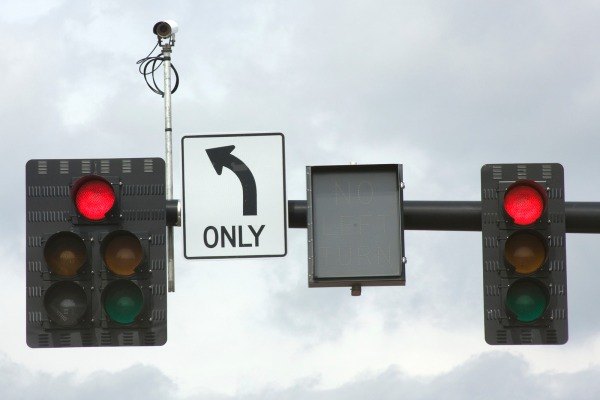B&B Reject Red-Light Cameras In Three States On Election Night
Tuesday, the B&B made their voice known on the issues affecting them, including a set of referendums on the infamous red-light traffic camera.
Autoblog reports voters in Cleveland and Maple Heights, Ohio, St. Charles County, Mo., and Sierra Vista, Ariz. overwhelmingly rejected the cameras on the basis that their use did more for the bottom line of the manufacturers than the safety of those under the electric eye.
In Cleveland, 78 percent voted to ban cameras unless law enforcement was present, while 75 percent of Sierra Vista voters ditched the technology on the outskirts of town. Meanwhile, 76 percent of voters in Maple Heights and 72 percent in St. Charles voted to ban the cameras outright.
On the other side of the issue, AAA says it’s all for the cameras, just not how they’re usually implemented. Representative Michael Green explained that while the goal of the cameras was to deter, “not to give tickets,” he could understand where implementation in certain places, such as Washington, D.C., had faltered in favor of revenue-generation and lack of transparency.
That said, usage of the cameras are falling by the wayside as is, thanks to speed cameras taking their place on the automated enforcement chain.
Seattle-based writer, blogger, and photographer for many a publication. Born in Louisville. Raised in Kansas. Where I lay my head is home.
More by Cameron Aubernon


































Comments
Join the conversation
The yellow interval absolutely cannot be reduced to less than 3 seconds, assuming the signals are controlled by a computer and not by ancient mechanical means. The software of the signal computer, and of a safety device called a conflict monitor, have a bare minimum of 3 seconds. I have heard rumors on the internet of yellow intervals being reduced, perhaps to this minimum, but the person doing it would be putting him/herself at a real risk of lawsuit if the size of the intersection and speed limit dictated a longer yellow. However, and there's always a however, a person could conceivably reduce the yellow from for instance 3.5 to 3.0 seconds, while increasing the "all red" timing by 0.5 seconds. That would keep what's known as the total clearance time the same, while catching more cars running a red.
Red light cameras would make a lot of sense in major cities, to deter the idiots who charge into the intersection as the green turns yellow, when they can't clear the intersection because the road ahead is jammed with traffic that isn't moving. So, they sit there blocking cross-traffic from getting through. It's a veritable plague in downtown Toronto, especially in rush hour on roads that connect to the expressway.
"As is someone just tossed out of an airplane at 30,000 feet. Looking down at everyone else from his perch at 25,000- 24,000, 23,000……" That's good ~ use sophomoric logic in complex situations . just like the various third world shytholes do ~ that's why everyone there , wants to move to the U.S. of A. -Nate
But... but... THINK OF THE CHILDREN!